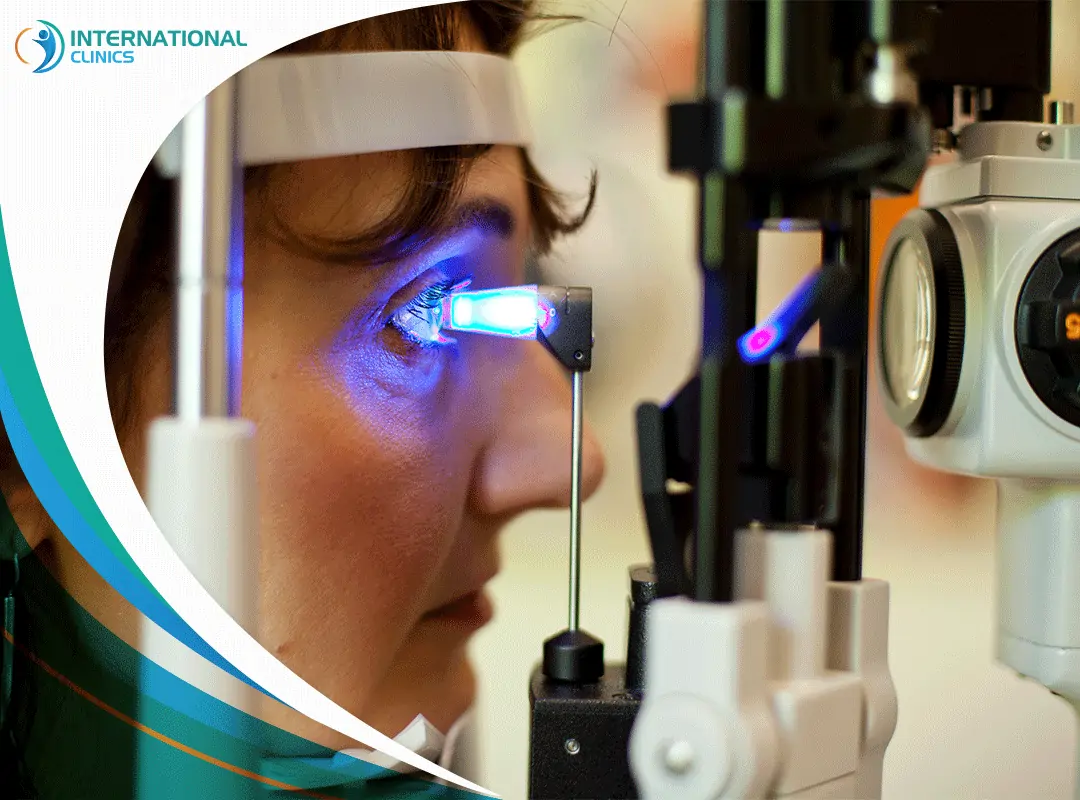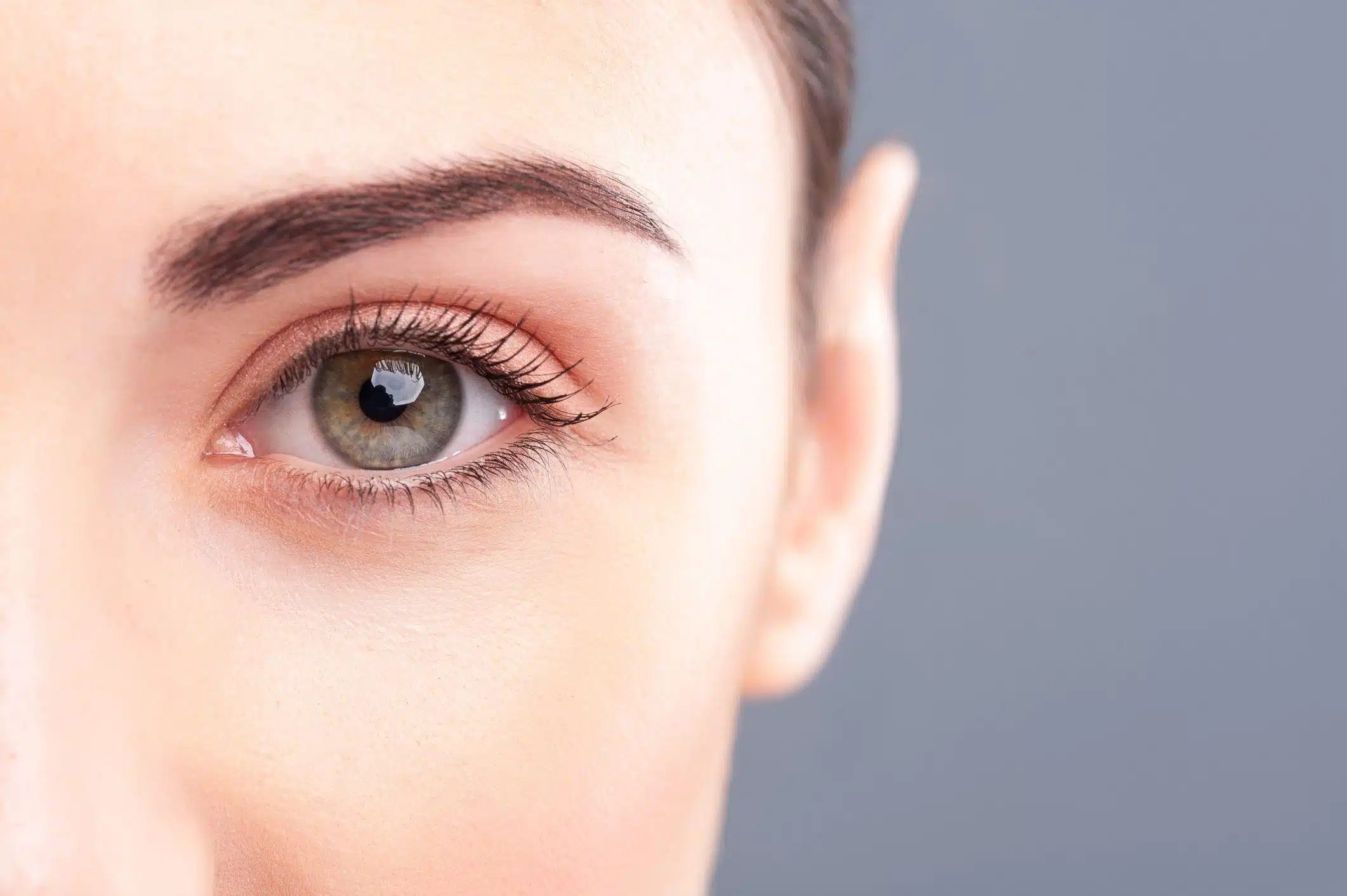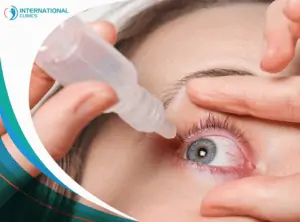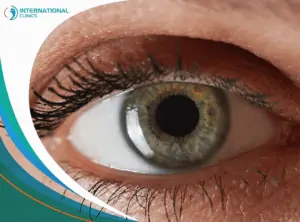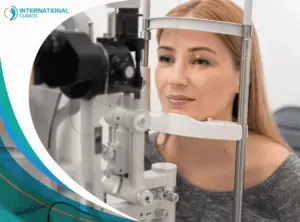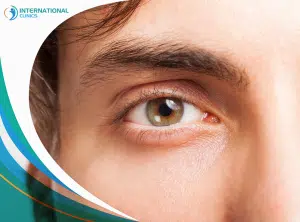Eye pressure measurement, also known as tonometry or intraocular pressure testing, is an important procedure to check the health of the eye and diagnose glaucoma. Eye pressure measurement methods are diverse and come in different forms.
If the intraocular pressure exceeds the normal limit, the patient may have glaucoma; however, this may not be true all the time. it is possible that there is no glaucoma at all, and it is just a tiny increase in eye pressure.
The normal eye pressure measurement ranges between 10-21 mm Hg. An eye pressure measurement of 15 mm Hg is normal. If it exceeds this limit, the patient might have high intraocular pressure or ocular hypertension, which leads the doctor to suspect glaucoma.
Glaucoma leads to damage in the tissues of the eye that may reach the level of blindness. Thus, measuring intraocular pressure is one of the most important diagnostic methods for this particular condition.
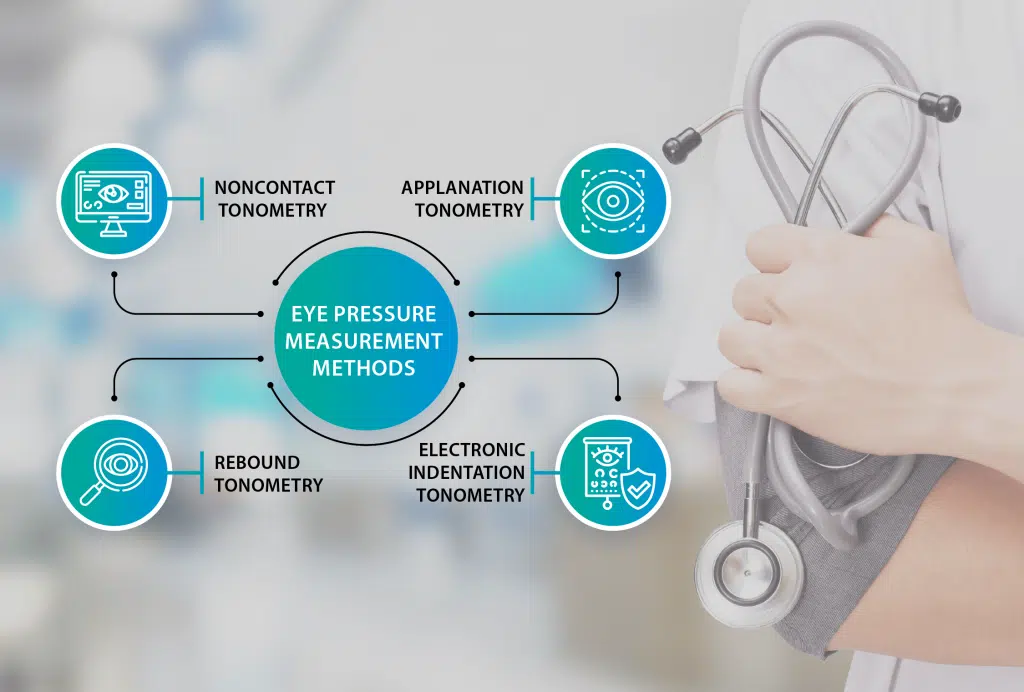
Best 4 Eye Pressure Measurement Methods
The most important and common methods to measure intraocular pressure (tonometry) include the following:
Applanation Tonometry
This type of tonometry uses a slit lamp to look at your eyes with a small probe that can flatten part of your cornea to measure eye pressure. Known for being a very accurate measurement of eye pressure, this type is the right choice to measure eye pressure after a simple screening test finds increased eye pressure. The force needed to flatten your cornea determines the exact value of pressure in the eye during this test.
Electronic Indentation Tonometry
The usage of electronic tonometry is booming recently as more doctors prefer to use these devices for their accuracy, but their results can be different than applanation tonometry. During this test, your doctor will use an electronic device that has a rounded tip, which looks like a pen, and places it directly on your cornea. The results will manifest on a small computer panel.
Rebound Tonometry
This device was introduced for the first time in 2000, and since then, it gained a stronghold in clinical practice. Rebound devices are portable and easy to use at home for children. Some varieties don’t require eye drops. Rebound tonometry has a subtle probe that touches the cornea to measure the pressure.
Noncontact Tonometry
Noncontact tonometry is a simple method that uses a puff of air to flatten your cornea to measure intraocular pressure without touching your eye and even without using numbing eye drops. Doctors prefer to use this method to check eye pressure in children.
Other Eye Pressure Measurement Methods
There are other methods to measure eye pressure besides the methods mentioned above already. Doctors usually rely on these methods to measure eye pressure over 24 hours.
The most prominent method is the contact lens with an eye pressure sensor, also known as SENSIMED Triggerfish. This method can be very helpful to track the changes in eye pressure throughout the day. However, the technology is still immature and needs more advancements, and can’t be an accurate eye pressure measurement in ICU.
As we mentioned earlier, the normal intraocular pressure should not be more than 21 mm Hg. If it exceeds this limit, high intraocular pressure becomes more probable, which is a common indicator of glaucoma.
However, before trying any of the eye pressure measurement methods, the doctor may choose early diagnosis by conducting other tests to identify high intraocular pressure. These tests include:
- Examine the patient’s optic nerve to ensure that there is no damage to this important nerve.
- Examine the fluid drainage canals of the eye, and whether they are working normally or suffer from narrowing. This eventually leads to a buildup of fluid inside the eye and an increase in pressure inside.
- Test the patient’s vision and whether it is normal or suffering from a certain disorder.
What Exactly Is Intraocular Pressure?
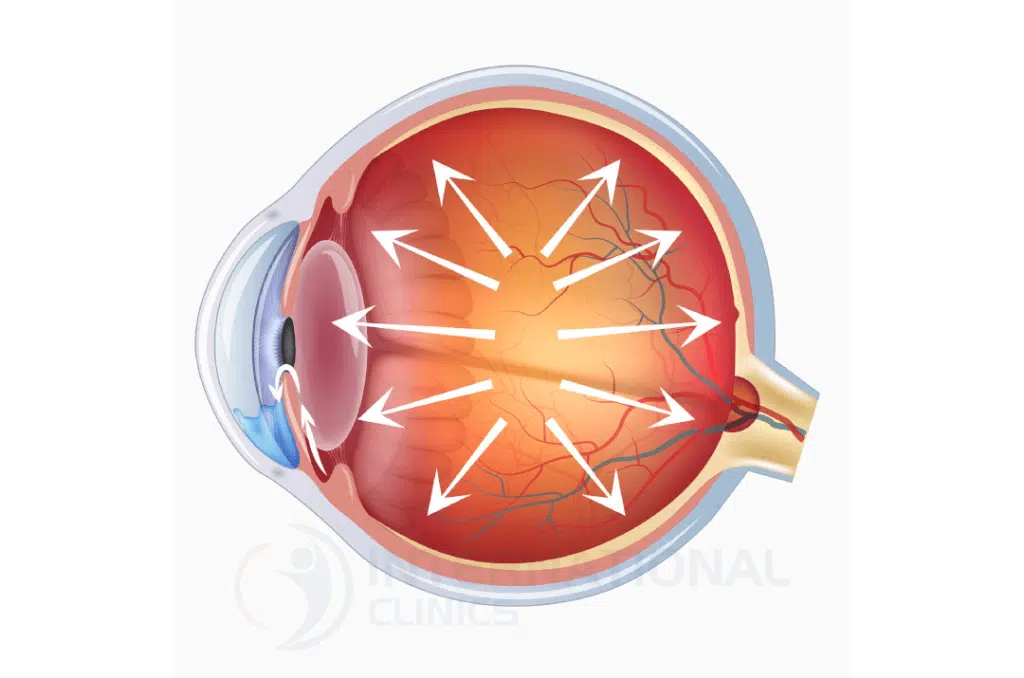
The human eye secretes a fluid called aqueous humor, which is very similar in composition to the liquid in plasma but contains a small amount of protein. The magnitude of the force exerted by the aqueous humor determines intraocular or eye pressure.
This fluid sets between the lens of the eye and the cornea. The eye drains this fluid through certain small canals. If the fluid drainage remains stable, the fluid pressure in the eye will remain normal.
But if there is a blockage or narrowing in drainage of the canals, the eye pressure will rise due to the accumulation of fluid inside the eye, which leads to severe damage to the optic nerve. Doctors call this condition glaucoma, and it may lead to complete vision loss if left untreated.
If the patient commits to regular examination, the doctor will be able to treat and test high intraocular pressure quickly by eye pressure measurement methods, before reaching advanced stages.
However, according to some sources, there is not enough evidence to justify the benefits and harms of screening certain types of glaucoma.
Symptoms of High Intraocular Pressure
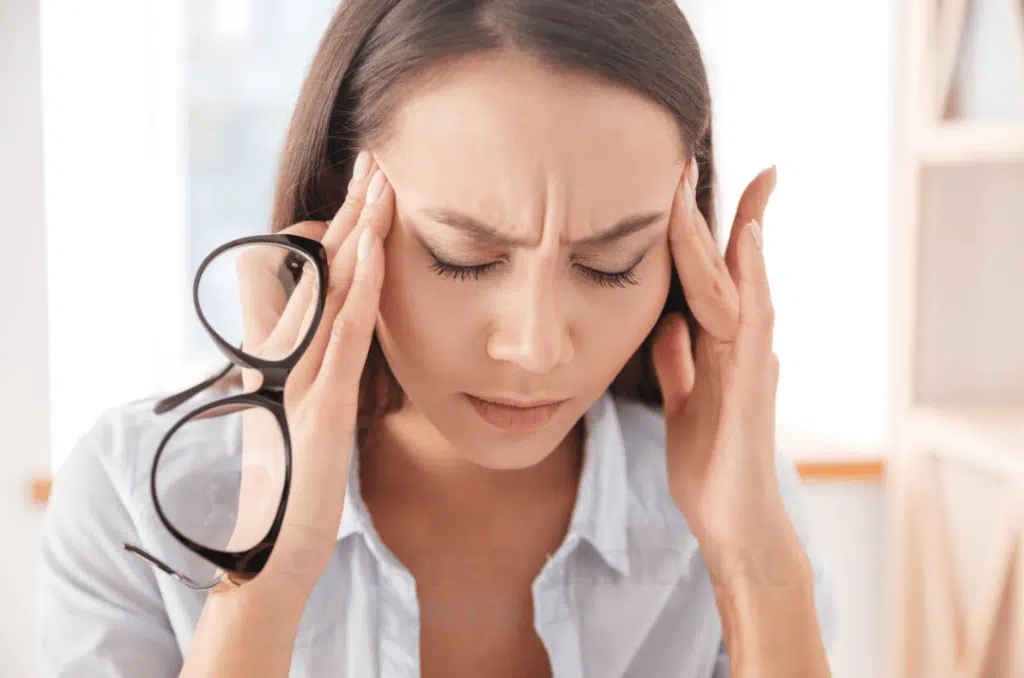
It is very important that people over forty years of age go to an ophthalmologist to get a regular eye examination and tonometry, especially if they have a family history of one of the common eye diseases, such as glaucoma, cataracts, or other diseases that greatly affect vision.
Among the main symptoms of high intraocular pressure are the following:
- Redness or pain in the eye
- Blurry vision
- Uncontrolled tears
- Severe headache
- Low vision clarity or seeing a dark spot in the field of vision
- Seeing a spectrum of colors when looking directly at a bright light
Main Risk Factors of High Intraocular Pressure
High intraocular pressure can arise from different causes, most notably:
- Previous eye infections
- Having diabetes or high blood pressure
- Having atherosclerosis or any heart disease
- Being of an African descent
- Being over 60 years old
- Having a benign carcinoma of the eye
- Some genetic components increase the likelihood of developing high intraocular pressure
Causes of Sudden High Intraocular Pressure
High intraocular pressure is one of the most important risk factors for developing glaucoma. A sudden increase in intraocular pressure requires the immediate use of one of the eye pressure measurement methods. The causes of this sudden increase may include:
- Increased secretion of aqueous humor inside the eye.
- Failure of the drainage system inside the eye, which leads to fluid accumulation and increased pressure.
- Having some diseases such as asthma. Some asthma medications can cause high intraocular pressure too.
- Certain eye drops are used to treat various eye diseases, especially those prescribed by the doctor after LASIK vision correction surgeries.
- Some eye diseases, such as pseudoexfoliation syndrome, pigment dispersion syndrome, and corneal arcus affect people with thin corneas and make them more susceptible to high eye pressure.
It should be noted that the patient may have a thickened cornea, which results in a false diagnosis when measuring intraocular pressure (tonometry).
Treatment of High Intraocular Pressure
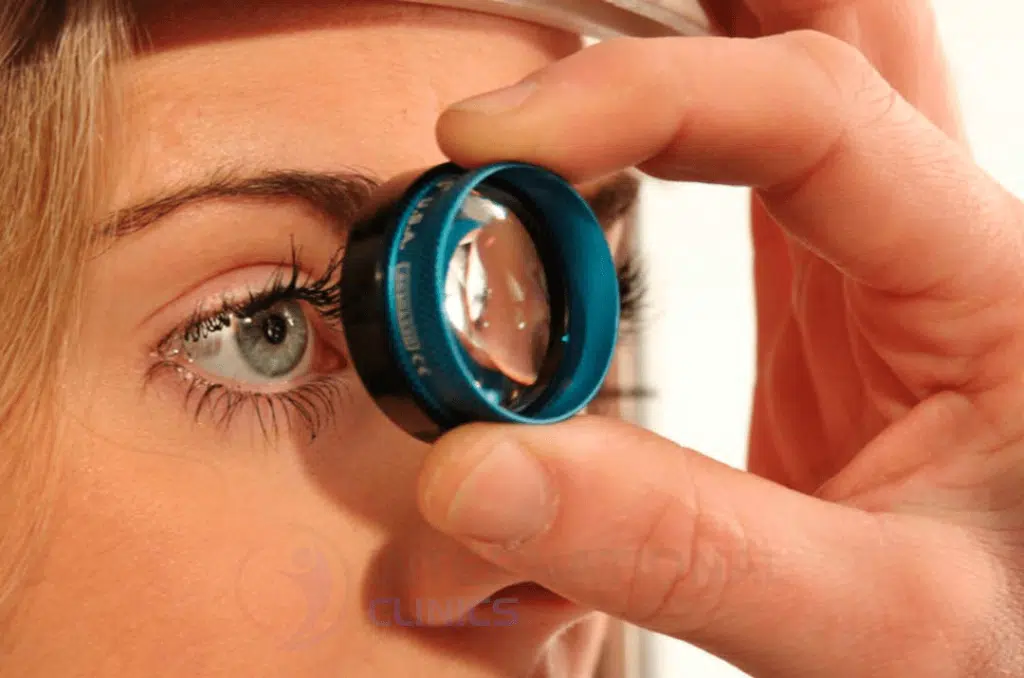
High intraocular pressure is not a disease but rather a significant risk factor for glaucoma. Therefore, the doctor chooses to rely on eye pressure measurement methods and treat high pressure inside the eye in several ways to prevent glaucoma, which severely affects his vision.
There are some cases in which the doctor does not give any medications to the patient; Rather, they wait, follow up on the patient’s condition, and give them some instructions to prevent high intraocular pressure. Based on this, each patient has a unique treatment plan. Among the ways to treat high eye pressure are the following:
Eye Drops
The doctor prescribes eye drops to reduce eye pressure measurement. They test the effects of these drops on only one eye at a time before jumping to the other eye.
It is very important for the patient to follow the instructions carefully to get the best results. If the patient neglects this, the blood pressure inside the eye will increase significantly, leading to optic nerve damage and glaucoma.
Among the medications that the doctor may prescribe to the patient in the first stage of treatment are Latanoprost and Bimatoprost, which may need time to show their effectiveness in reducing intraocular pressure.
The effectiveness of the eye drops may not appear quickly, so the patient must visit the doctor to check their condition. The doctor uses an eye pressure measuring device to see if the pressure has decreased a little or is still the same.
Visiting the doctor also aims to treat any side effects that the patient may experience after taking the prescribed medications. The patient should visit the doctor’s clinic after two to three weeks after receiving the medications.
Laser Treatment
If the eye drops are slow-acting, not well tolerated, or have no effect at all, the doctor may choose laser treatment, which is a somewhat good option as long as there is no damage to the optic nerve.
Laser treatment carries a risk to the patient that may match the risk of developing glaucoma. However, if the treatment becomes necessary, the patient must discuss all the details and risks of laser with the physician.
Surgery
If eye drops and laser treatments fail to decrease eye pressure, your doctor may choose to perform a surgery called trabeculectomy.
trabeculectomy allows fluid to drain by removing part of the eye-drainage tubes. Your doctor may put you under general or local anesthesia, depending on your condition. After the surgery, you may no longer need to take eye drops.
Ways to Prevent High Eye Pressure
Eye pressure measurement methods and treatments become unnecessary if you follow a healthy lifestyle and stick to the following recommendations:
- Follow a Healthy Diet: It is important for the health of the eye in particular, and the body in general, that the individual obtains the necessary amount of vitamins and nutrients, such as selenium, copper, zinc, and antioxidants.
- Practice exercises: the most important of which is riding a stationary bike, which helps reduce eye pressure. But it is better to consult a doctor before starting any kind of exercise.
- Cut down on caffeinated drinks: These drinks increase the risk of developing eye pressure, so it is better for you to replace them with green tea, which contains antioxidants.
- Avoid excess fluids: Drinking a large amount of fluid at once leads to an increase in the fluid secreted by the eye, which leads to an increase in intraocular pressure.
- Relax: It is better for every one of us to avoid stressful situations. Mental and physical stress lead to high eye pressure, so resting every day is better for the health of your eyes. You can reduce intraocular pressure by practicing breathing exercises for five minutes three times a day and relaxing in a calm place with a slightly dim light.
Eye Pressure Measurement Methods & Treatment in Turkey
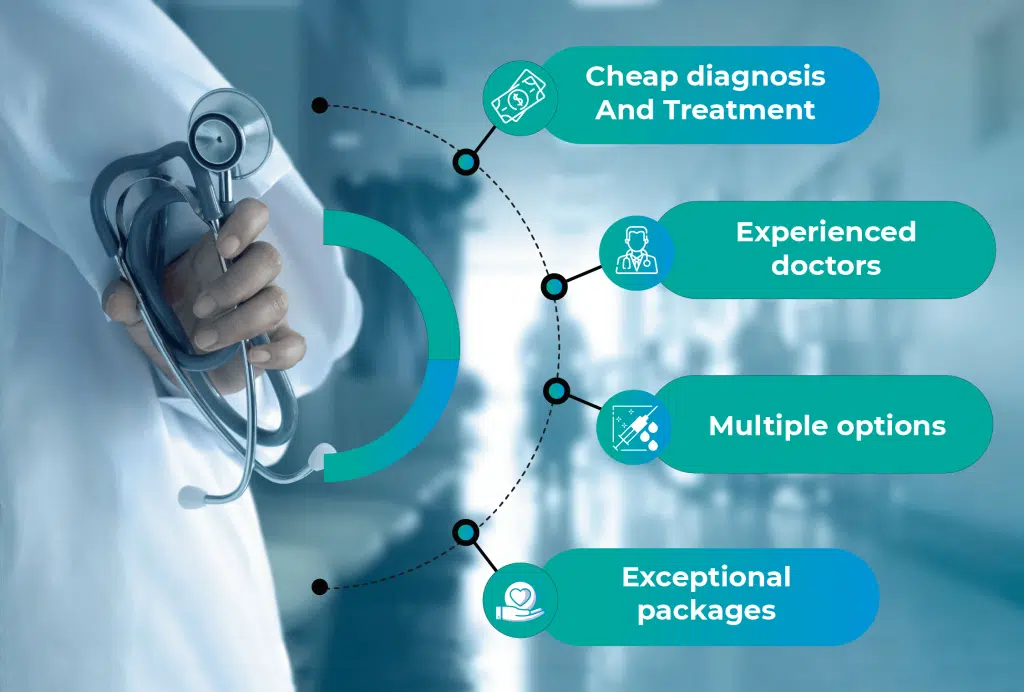
In Turkey, doctors use a variety of eye pressure measurement methods to detect glaucoma. Increasingly, people start to visit Turkey to receive accurate diagnoses and treatment for high intraocular pressure. What makes Turkey special for diagnosing and treating high intraocular pressure is implied in the following points:
- Cheap diagnosis & Treatment: People mainly prefer Turkey because of the cheap treatment and affordable diagnostics tests offered by clinics in the country.
- Experienced doctors: Turkish ophthalmologists are known for being highly qualified and precise when diagnosing and treating eye problems, such as glaucoma and retinopathy.
- Multiple options: To accurately diagnose high intraocular pressure, Turkish ophthalmologists use different eye pressure measurement methods including rebound tonometry and applanation tonometry.
- Exceptional packages: To make life easier for patients, Turkish clinics such as International Clinics offer patients all-inclusive packages to create an easier treatment experience for them.
The Bottom Line
Eye pressure measurement methods are commonly available to diagnose high intraocular pressure and glaucoma. Depending on the complexity of your case, your doctor can choose to rely on applanation tonometry, rebound tonometry, non-contact tonometry, or other methods.
Here at International Clinics, our doctors use different methods to diagnose high intraocular pressure and glaucoma. They design a plant to track the fluctuations of eye pressure and decide the best treatment for each case. You can reach us now by clicking on the contact us buttons below.
Frequently Asked Questions (FAQ)
What Is Normal Tonometry Readings?
The normal eye pressure range is 10 to 21 mm Hg. However, several factors can affect the reading, including the thickness of the cornea. Expect higher readings for normal eyes with thick corneas and lower readings for normal eyes with thin corneas.
What Is an Unsafe Eye Pressure?
If your eye pressure is higher than 28-30 mm Hg, then you’re in a dangerous zone and should seek treatment as quickly as possible. An eye pressure of more than 30 mm Hg can lead to optic never damage.
When Should You Not Do Tonometry?
Avoid tonometry when you suspect a rapture in the eye globe because tonometry can increase the damage of the globe and push the drain of aqueous and vitreous humor out of the eye.
How Do You Lower Eye Pressure Quickly?
The best way to lower your eye pressure quickly is to use an eye drop. If you opt for natural methods to lower eye pressure, you can try doing some exercises and focus only on eating healthy foods.
How Accurate Is Non Contact Tonometry?
Researchers describe non-contact tonometer as an accurate method to measure eye pressure less than 20 mm Hg. However, the reading can be affected by the kind of anesthesia used.
What Can Be Mistaken for Glaucoma?
Many conditions can indeed mimic glaucomas, such as hereditary optic neuropathy, ischemic optic neuropathy, and compressive optic neuropathy. Hence, you need to consult your doctor to confirm that you’re having glaucoma.
Is Glaucoma Treatable If Caught Early?
Unfortunately, glaucoma has no cure, even if it’s caught early. However, you can manage the symptoms of the condition and spare yourself and risk of losing eyesight.
Read More: Glaucoma Treatment in Turkey: Surgery & Other Options
